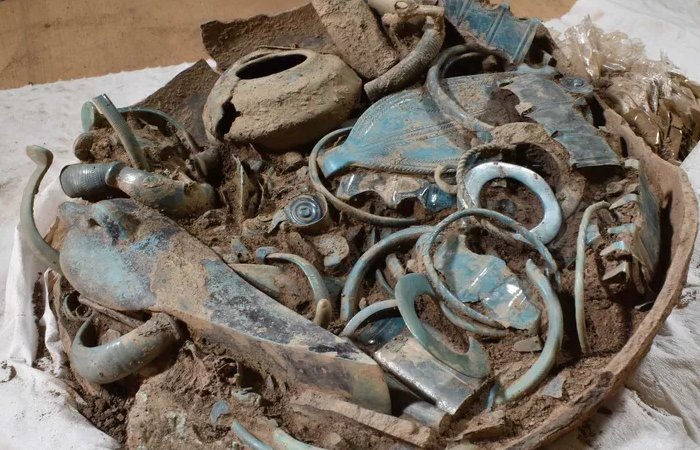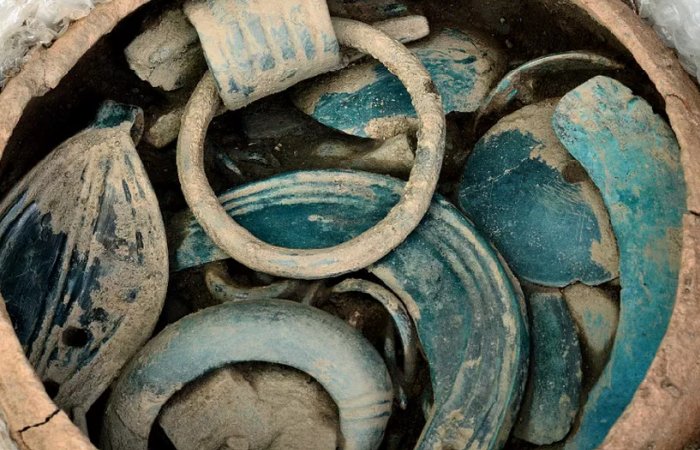Jan Bartek – AncientPages.com – Archaeologists in France have unearthed hundreds of exceptional Bronze Age artifacts that were most likely offerings. The still-well-preserved 3,00-year-old artifacts include jewelry and weapons that were found at the prehistoric site in Gannat in Allier.
Some of the Bronze Age items have “already been analyzed, revealing women’s or children’s jewelry, such as bracelets, anklets and pendants at the bottom.

One of the large sacrificial deposits in pit of metal objects, discovered in a high-rise Bronze Age habitat in Gannat, in Allier Credit: M. Vallée
Next, one of them contained a layer of tools and weapons, while the other had chariot decorations, riding equipment and wheel parts in it.
Bronze axes had then been placed on top of each vessel,” the Connexion France reports.
“They could be offerings as found in Greece at that time, deposited during the foundation or abandonment of the settlement, to help ensure divine protection”, Pierre-Yves Milcent, lecturer at the University of Toulouse-Jean Jaurès said.
“They could be offerings as found in Greece at that time, deposited during the foundation or abandonment of the settlement, to help ensure divine protection”, said Dr Milcent.

Vases filled with objects of all kinds have been brought to light and analyzed. Credit: F. Edge
“This discovery, with intact artifacts, is exceptional because it allows us to better understand how and why they were buried”, he added.
See also: More Archaeology News
Other finds discovered this summer are still being analyzed.
According to the Connexion France, “Allier is well-known for its sites of prehistoric interest and one of the aims of the research program is to limit the damage caused by looting.
The region had significant economic potential, thanks in part to the navigable Sioule river and to the soil, which provided the tin for making bronze.”
Written by Jan Bartek – AncientPages.com Staff Writer





